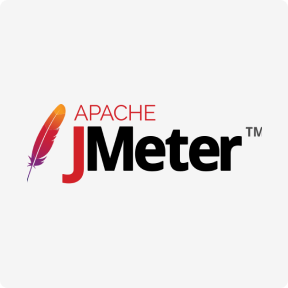Chatbots have become an indispensable tool for customers as they forgo long telephone hold times for instant answers. However, a chatbot that only gives bare-bones development of natural language processing replies is not too helpful. Working with NLU means moving beyond NLP to evolve chatbots from basic commands and keyword recognition to conversational capabilities.
- These so-called “Language Models” are based on huge text corpora of Facebook, Google, etc., (pre-)trained by randomly masking individual words in the texts and predicting them in the course of training.
- Stopwords are the most common words in a language that are needed for basic grammar and sentence structure.
- The thing with internal documentation is that there is a lot of it, and it’s tough to navigate through the hoards of data without a helping hand.
- While they have the amazing, human-like capacity to produce language, their overall cognitive power is galaxies away from us humans.
- Banks and other lenders use ML classification algorithms and predictive models to determine who they will offer loans to.
- A word, phrase, or other elements in the source language is detected by the algorithm, and then a word, phrase, or element in the target language that has the same meaning is detected by the algorithm.
- In almost every industry, chatbots are being used to provide customers with more convenient, personalized experiences, and NLP plays a key role in how chatbot systems work.
At their best, chatbots provide instant, 24-7 support throughout the customer journey. They are low-friction channels that allow customers to instantly interact with your organization and solve their problems quickly, yielding benefits https://www.globalcloudteam.com/ like higher customer satisfaction ratings. Deep learning is a state-of-the-art technology for many NLP tasks, but real-life applications typically combine all three methods by improving neural networks with rules and ML mechanisms.
Automated Document Review
It can work through the differences in dialects, slang, and grammatical irregularities typical in day-to-day conversations. This makes it problematic to not only find a large corpus, but also annotate your own data — most NLP tokenization tools don’t support many languages. That’s why a lot of research in NLP is currently concerned with a more advanced ML approach — deep learning.
Using support vector machines (SVMs), for example, a machine learning-based system might be able to construct a classification system for entities in a text based on a set of labeled data. In this article, we’ve talked through what NLP stands for, what it is at all, what NLP is used for while also listing common natural language processing techniques and libraries. NLP is a massive leap into understanding human language and applying pulled-out knowledge to make calculated business decisions.
Natural Language Processing (NLP) in Business: A Guide to NLP Use Cases
This can be explained by the fact that the early NLP models mostly had to be trained under supervision (so-called supervised learning). However, supervised learning requires that training data must be provided with a dedicated target variable. This means that, for example, in the case of text classification, the text corpus must be manually annotated by humans before the model training. To ensure that human beings communicate with computers in their natural language, computer scientists have developed natural language processing (NLP) applications.
Natural Language Processing (NLP) is a subpart of Artificial Intelligence that uses algorithms to understand and process human language. Various computational methods are used to process and analyze human language and a wide variety of real-life problems are solved using Natural Language Processing. Accelerate the business value of artificial intelligence with a powerful and flexible portfolio of libraries, services and applications. IBM has innovated in the AI space by pioneering NLP-driven tools and services that enable organizations to automate their complex business processes while gaining essential business insights. It also includes libraries for implementing capabilities such as semantic reasoning, the ability to reach logical conclusions based on facts extracted from text. The basic building blocks of a language model are the encoder and the decoder.
How to enhance LLMs with human-like cognitive skills
You can see the closest possible terms to your misspelled words and change those words with this function. The media shown in this article on K-Means Clustering Algorithm are not owned by Analytics Vidhya and are used at the Author’s discretion. These are some of the most interesting NLP applications, there are many more interesting applications of NLP. After downloading the data, we add the data to the Power BI service workspace. Text Summarization is the process of condensing a long piece of text into a shorter version, preserving the basic idea of the text and still containing all the key points.
At a macro level, sentiment analysis can turn copious amounts of unstructured data into structured data that helps you understand your customer. This technique inspired by human cognition helps enhance the most important parts of the sentence to devote more computing power to it. Originally designed for machine translation tasks, the attention mechanism worked as an interface between two neural networks, an encoder and decoder. The encoder takes the input sentence that must be translated and converts it into an abstract vector. The decoder converts this vector into a sentence (or other sequence) in a target language.
Rule-based NLP — great for data preprocessing
In modern NLP applications deep learning has been used extensively in the past few years. For example, Google Translate famously adopted deep learning in 2016, leading to significant advances in the accuracy of its results. Machine translation tools have come to replace the traditional rule-based and dictionary-based language translators. Most machine language tools available today can translate millions of words from one language into another targeted language, that would have been quite challenging the traditional/manual way.

Even as human, sometimes we find difficulties in interpreting each other’s sentences or correcting our text typos. NLP faces different challenges which make its applications prone to error and failure. Earliest grammar checking tools (e.g., Writer’s Workbench) were aimed at detecting punctuation errors and style errors. Developments in NLP and machine learning enabled more accurate detection of grammatical errors such as sentence structure, spelling, syntax, punctuation, and semantic errors. Language as a method of communication helps people write, read, and speak. Individuals make plans and decisions in natural language, particularly in words.
Sentiment Analysis: Types, Tools, and Use Cases
You need to classify these articles into Sports , Politics, Entertainment, Technology, Business etc. Based on the occurrence of some key-words, or even the frequency of some words, we can classify the documents into one of the above categories. Service personalization is one of the most effective methods of user engagement. You get to know what users like more and present them with more stuff that is relevant to them to maximize the use of the service. In other words – if it gives useful stuff, why not use it more to get more helpful stuff.

Instead, NLP is mostly used for more targeted downstream tasks such as sentiment analysis, question answering and information extraction. This is the time to apply transfer learning and reuse the existing linguistic knowledge for more specific challenges. During fine-tuning, a portion of the model is “freezed” and the rest is further trained with domain- or task-specific data. The NER process recognizes and identifies text entities using techniques such as machine learning, deep learning, and rule-based systems. Using machine learning-based systems involves learning with supervised learning models and then classifying entities in a text after learning from appropriately labeled NLP data.


